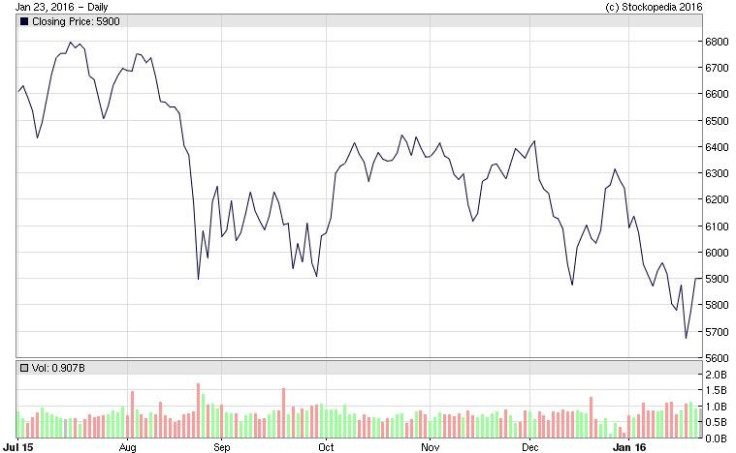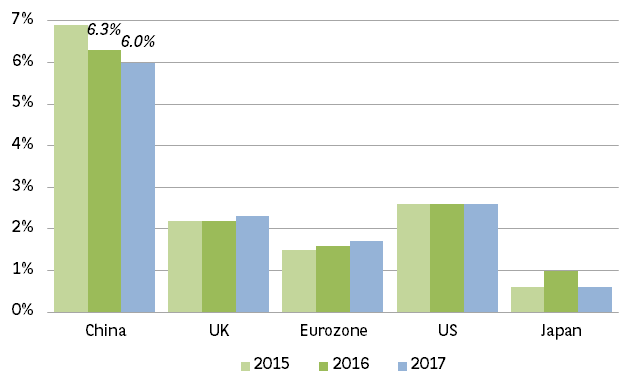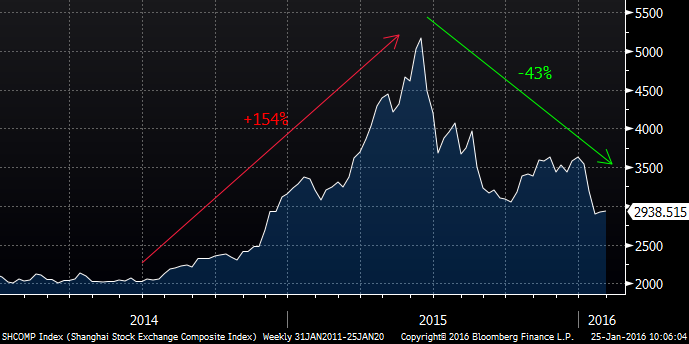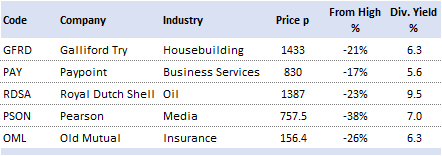Chinese stocks are in the red but don't panic – this is a global investment opportunity
It has certainly been a pretty ugly start to 2016 for stock market investors, with the bad news mainly due to three factors:
- a slowing US economy,
- increasing worries over an economic slowdown in China; and
- ever-falling oil prices.
Fear abounds in the US and Asia
I have spent the last two weeks touring the US and Asia, meeting a wide range of professional investors. In general, they blame the three risks above for taking a very cautious attitude when it comes to investing in stocks and shares.
With the Chinese stock market plunging to 14-month lows on the back of worries over a slowing economy, there seems to have been a contagion effect infecting stock markets in the rest of the world.

The UK's FTSE 100 index is a good relative measure of market health given its high percentage of global member companies in the oil and gas, mining and pharmaceutical industries.
It has not escaped the Chinese curse, falling from the 6,800 level in July last year to around 6,300 at year end, and then as low as 5,700 this month (Chart 1).
My view: The fear is overdone
I must confess, I personally have a less doom-laden view of the world. While investors' fears are perhaps well-founded in principle, I believe that stock markets are now over-reacting to the prevailing economic winds.
Yes, the world economy is contracting as growth in China and the US, the world's two largest economies, continues to slow. But the US should still post decent growth this year, boosted by consumption which remains strong on the back of rising employment.
China is in the middle of a long-term economic transformation away from being the world's goods-making factory to a more balanced economy, where domestic services and consumption are more important drivers, as is the case for instance in the UK.

These sorts of deep structural changes in a country of 1.4 billion inhabitants (four times the size of the entire European Union) are clearly not easy to make, and will result in a bumpy trajectory for the economy from time to time.
But the bottom line in China is that the economy is still growing, perhaps by less than the official 6.9% growth rate, but likely still in the region of 5% per year, which is still far more than we could ever hope for in Europe (Chart 2).
Don't look too closely at the Chinese stock market
One should also not take too much notice of the Chinese stock market when judging the prospects for stocks and shares elsewhere in the world. I would make three key observations about the Chinese stock market:
- the Chinese economy is stuffed with lots of former state-owned companies where the Chinese government is still a major shareholder, and often directs the company's management as a result;
- the Chinese middle class do not hold much of their huge financial savings in stocks and shares: rather they prefer to hold property or cash; and
- the Chinese are, as a people, inveterate gamblers, and so treat the stock market more like a casino than a vehicle for making long-term investments.
Just look at the way that the Chinese stock market inflated like a bubble, and has now deflated (Chart 3).

ETF, stock picks for the rebound
So all in all, I view the current sell-off in the stock market as a buying opportunity for the patient investor. There are two approaches: either simply to buy the whole stock market via an index-tracking exchange-traded fund (ETF), or via a number of individual stocks.

My preferred ETF for investors who want to buy into the European stock market without taking too much risk is the iShares MSCI Europe Minimum Volatility ETF (UK code: EUMV).
This is a low cost, lower-risk ETF that should benefit from any rebound in European stocks following this latest sell-off.
If you prefer to look at individual shares, then the table (Chart 4) contains five suggestions in the UK of shares that have sold off considerably from their 2015 highs, and which offer attractive dividend yields. This selection of shares have been drawn from varying industries, are a mixture of domestic and global in nature, and would offer an average income yield of nearly 7% over the next year if bought at the current share prices.
Bottom line: I think the current fears have been exaggerated in January's stock market falls, and represent an excellent opportunity for investors.
Edmund Shing is Global Head of Equity Derivative Strategy at BNP Paribas in London. He holds a PhD in Artificial Intelligence.
© Copyright IBTimes 2025. All rights reserved.




















